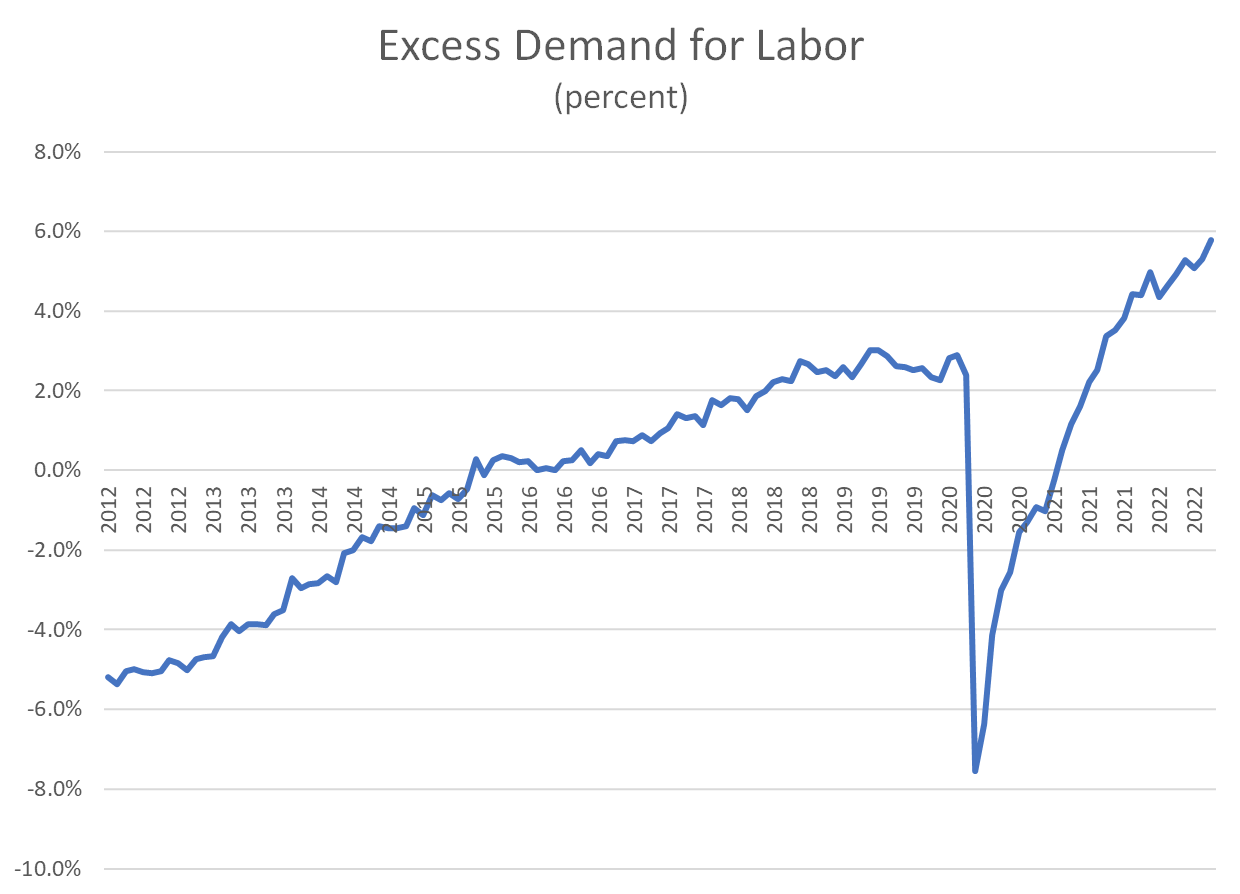The Daily Dish
September 23, 2022
Inflation and Recession
The major economic concerns at present are high inflation and the chances of recession. Both have roots in the labor market. Excessively tight labor markets put upward pressure on wages that, if not offset by productivity increases, translates into rising prices. Fighting inflation reduces the demand for goods, which translates into reduced demand for labor and, in the extreme, layoffs and unemployment.
The diagram below is a convenient indicator of the state of play in the labor market. Labor demand is the sum of those employed (nonfarm employment) and those business would like to hire (nonfarm job openings). Labor supply is the labor force. Shown in the graph is the demand as a percent of supply, adjusted for the fact that some of the supply of labor will be unemployed in the best of circumstances (the so-called natural rate of unemployment).
The chart tells a familiar story. In the aftermath of the Great Recession, the painfully slow recovery produced few jobs and much excess supply that was only slowly absorbed. By 2016, supply and demand are roughly synced up, after which the 2017–2019 acceleration of growth is apparent. One can see clearly the consequence of the Federal Reserve choosing to let the labor market “run hot” in late 2018 and into 2019 – a period that was characterized by low unemployment and rapidly growing wages.
In 2020, it all falls apart with the arrival of the pandemic, but recovery is quick, and completed by the end of the year. From 2021 forward, the excessive demand stemming from fiscal and monetary over-stimulus becomes apparent. Indeed, by this crude metric, the excess demand problem is 200 percent greater than the hot pre-pandemic labor market.
Looking forward, it will not be possible to reduce inflation to the 2 percent target without cooling off the excess demand in the labor market. And the key to a “soft landing” is to make sure it does not head into the negative territory experienced in 2012 and thereafter. Eakinomics will keep an eye on this handy summary statistic of labor market heat in the months to come.
Fact of the Day
Since January 1, the federal government has published rules that imposed $151 billion in total net costs and 81.7 million hours of net annual paperwork burden increases.











